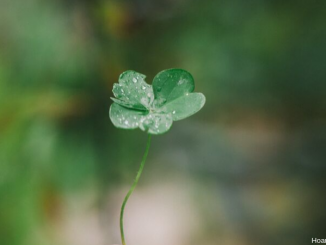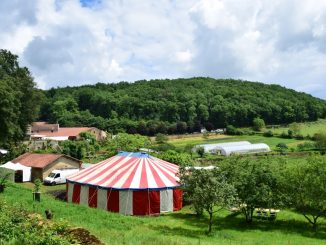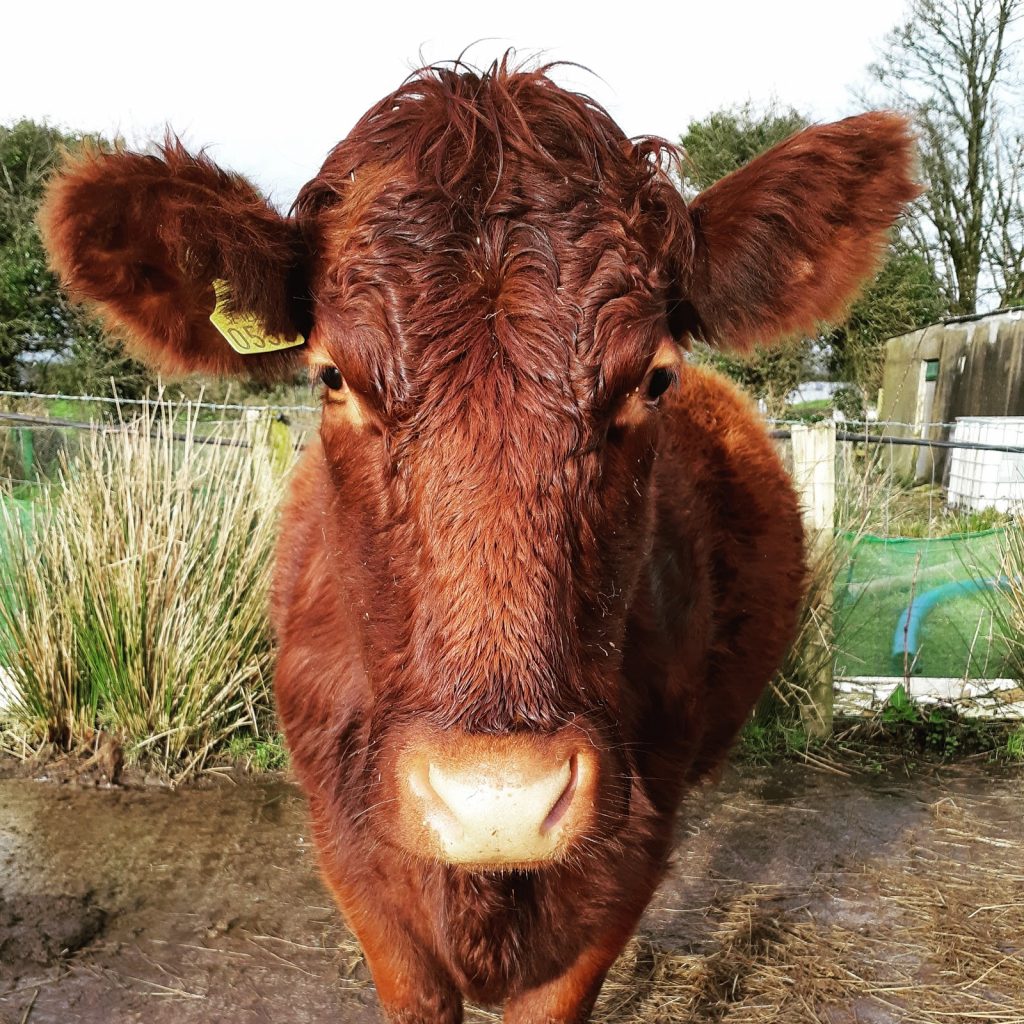
How far should you go to save one cow’s life? Sineád Moran’s introduces us to her stock and some of the struggles her cows have faced over the last two years. It brings up questions about farmer’s knowledge and learning to trust your instinct. But really caring for your cows takes time and energy, something not all farmers can afford. Sineád learnt this the hard way as a bowel infection pushed one member of her herd to the brink of death.
On a small farm you really get to know your stock. Each cow has a financial and emotional impact. I guess we are more precious of our cows when we only have so few.
Each of our ten cows has their own personality, best mates, and of course, name. Some of those names have meaning, some a little strange and others just very practical; Red our first Shorthorn, Rua (the Irish for red) our second Shorthorn, Kenny and KennyTwo, Hereford crosses who got their name from the man who sold them to us, Mr. Kenny). KennyTwo became Boss even though she isn’t the Boss, that position is filled by Red.
Then we have Eleven, a Roan Shorthorn who can be a little strange. We were possibly engrossed in Stranger Things, the Netflix show, at the time we came up with that one. Then it’s Rare Red, an aptly named Shorthorn from Rare Ruminare’s Farm. Small-twin, an Angus Cross, her other similar namesake Big Twin has since moved onto another farm. Then its Beauty, an all black cow with a white mark on her forehead, I was obsessed with the book Black Beauty as a kid. Then we have Dipdye, an all black cow Angus Cross with a white tipped tail.
Lastly, we have Carrottop, a Hereford cross cow who has a big curly fringe come winter.
Calving Down and Bouncing Back
Carrottop has had an eventful 2 years. She was the second of our cows to have her first calf in 2017. She had a fabulous heifer calf and was the first to bounce back post-calving down. What I mean by this is she dropped her winter coat very fast and needed no special attention, vitamins or anything else.
That year was the first year where we had to make the dreaded ‘cull’ list. The cows that didn’t thrive on a grass only diet had to move on. Running a 100% grass fed system means we can’t (because we don’t want to) feed extra rations. For example high protein grains, soya and the like. So Big Twin, Mullet, Blue, BlackEyes and a few others all moved onto other farms and we bought in some Shorthorns in their place. Carrottop and the others went on to raise their first calves and be back in calf again for 2018.
Trusting my Gut
However, our first farm drama happened in late November 2017. Carrottop, for some unknown reason picked up a bowel infection. I remember on the last check the night before we realised she was sick, thinking she looked off form. I mentioned it to an another farmer who was there on the night and he looked at me with that ‘crazy girl’ look and said “she looks grand to me”. Oh, how I have learnt to trust my instincts!
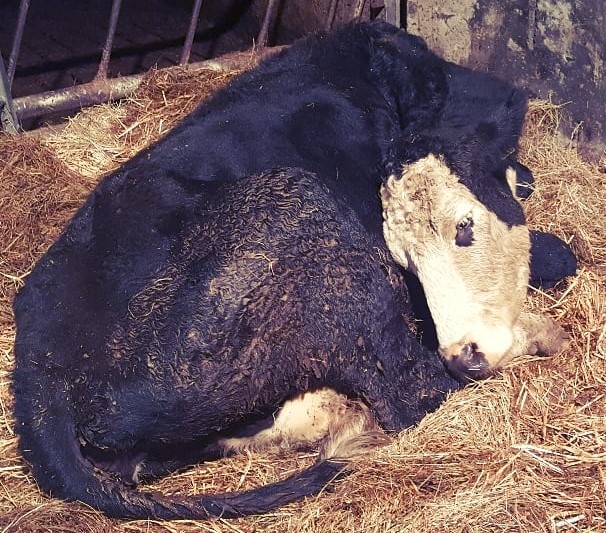
The next day, Mj and I knew all was not well. We called the vet. Aoife, another women in farming came round to see Carrottop, checked her over and advised us that she needed some antibiotics as she had developed a bowel infection. We asked her how and she explained that it could have been something she ate or picked up somewhere but there was no definitive way to tell. At that point the priority was to rid her of the infection.
A Cow Down
Cows, these big, half tonne-plus animals that can knock you out with a swish of their head if they want to are, when sick, like lifeless teddy bears. Carrottop had let the sickness get the better of her and 24 hours later was worse than before her treatment.
Neighbouring farmers commented that there was little hope for her, she was as they say “a cow that had gone down” and it was often impossible to get them up again. She was weak, unable stand and when she let her eyes close, she fell back and struggled to get up. Cows do not lie on their backs and rarely lie flat on their side. Which is why a cow laying flat out on her side strikes fear into farmers. Whatever the infection had knocked her flat out and taken her unborn calf with it.
We called Aoife and asked her what our options were. We didn’t want Carrottop to suffer, or prolong the dreaded inevitable that neighboring farmers were predicting. You see an animal that can’t stand, can’t go to the meat processor, we would have to end her life, forgo her financial worth and send her to the horribly named ‘burn-house’. Such waste, a waste of a great cows young life, a life doomed for nothing, not even the food chain.
Time to Care
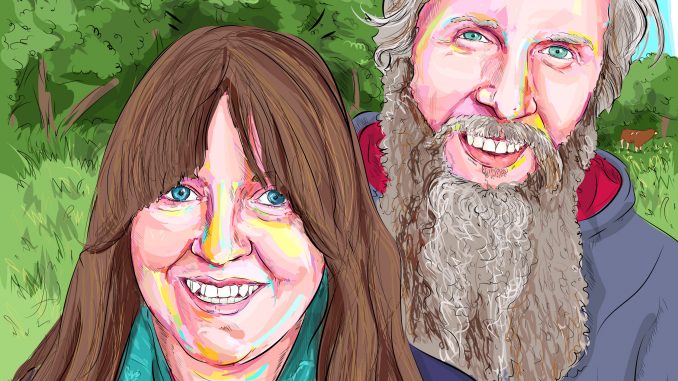
Mj is the practical person on the farm but it was me this time that asked the vet to give it to me straight, do what needed to be done and end any suffering. Aoife, looked over Carrottop once more and asked whether we were around for the next week or so. Were we free to invest the time into possibly bringing this cow back from the brink? Of course we said yes. On a small farm every cow matters, both in real and financial terms.
With a mix of sheer strength, determination and hope, we forced Carrottop to stand up and drink water. We fed her warm water and yeast direct into her ruman to stimulate a feeling of hunger. Fed her ivy, a little apple cider vinegar and garlic with the freshest of hay and again ensured she drank water. For 3 days, every 3 hours we did this. On day 4 we arrived to the shed to find her standing up herself munching on hay. By day 10 she was back to grass, winter grazing mind you, but out, content and healthy.
Then Carrottop had her second calf; a hefty bull calf, was delivered with a little assistance but healthy. Now both are out on the grass.
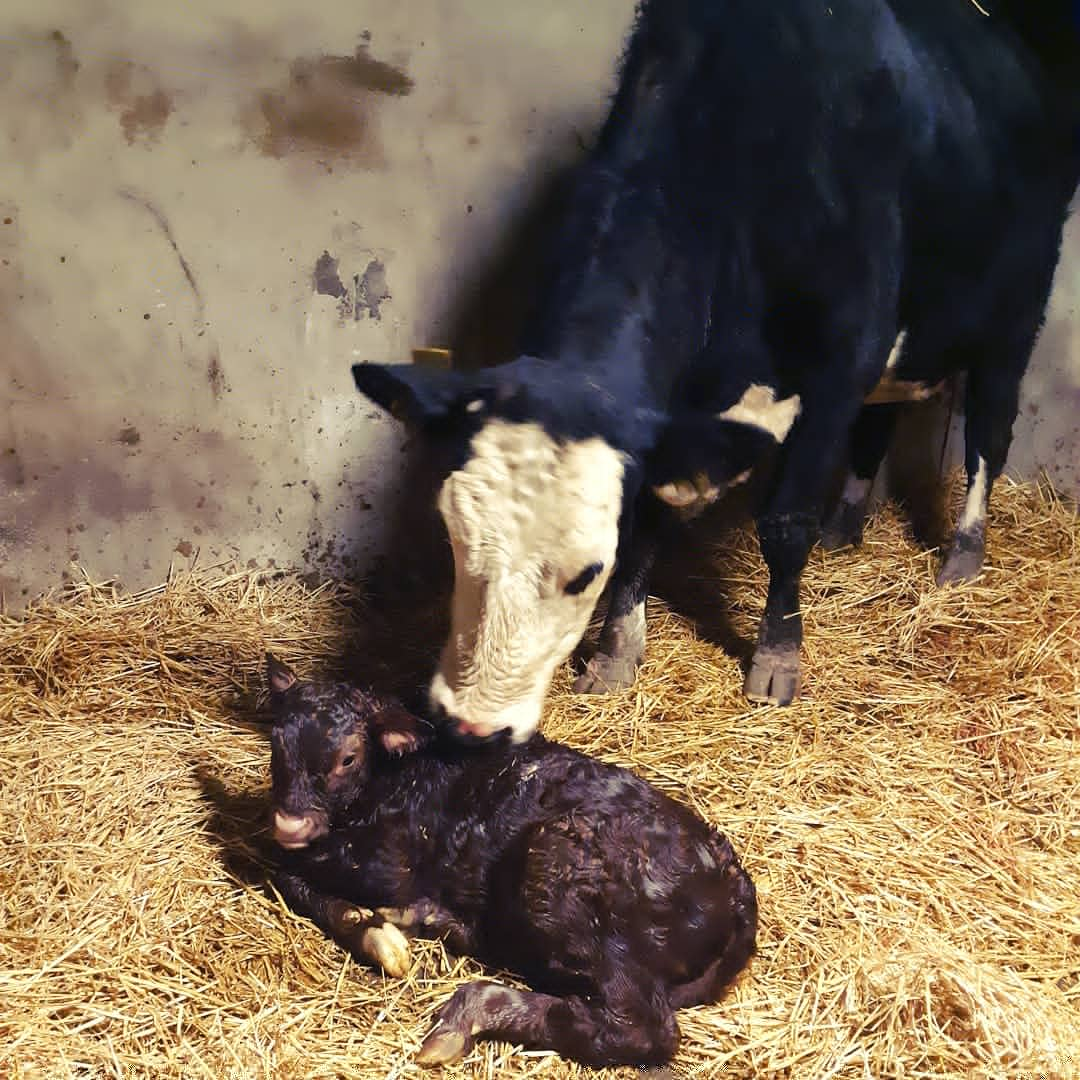
A Farming System Where Care is Expensive
When Carrottop was ‘down’, the general advice from the more experienced farmers at the time was to cut our losses. Accept the good with the bad and let her go. At the time I was so mad when I heard these words. I thought, how cruel, how blase even. It’s only as time passed and all was well again that I had time to process.
These farmers, they weren’t inherently uncaring, they were being practical. They’re realists. These farmers, unable to sustain a living from farming have to work full time, off-farm jobs. There are thousands more in Ireland and further afield like them. They knew the time investment it would require to work on Carrottop, without any guarantee she would even pull through. They would, in all reality, lose 3 or more days in wages (if they could even take the time off work). And still, they would have had to cover the costs of removing her if she didn’t make it. When life throws you lemons sometimes you just don’t have the time to make lemonade.
The experience highlighted another true cost of our modern food system; every time we purchase cheap food someone or something, somewhere covers the costs. To farm humanely and with nature, farmers need to be on the land everyday. But for far too many, farming doesn’t pay so they must supplement their income.
The CAP is meant to do that, it’s meant to cover the financial cost of farming cheap food, but in real life, that is not the case. The CAP is broken. With 80% of the subsidies going to only 20% of the recipients, the rest must tick boxes to get a subsidy that rarely covers cost. Is it not a sad reflection of modern agrarian life?
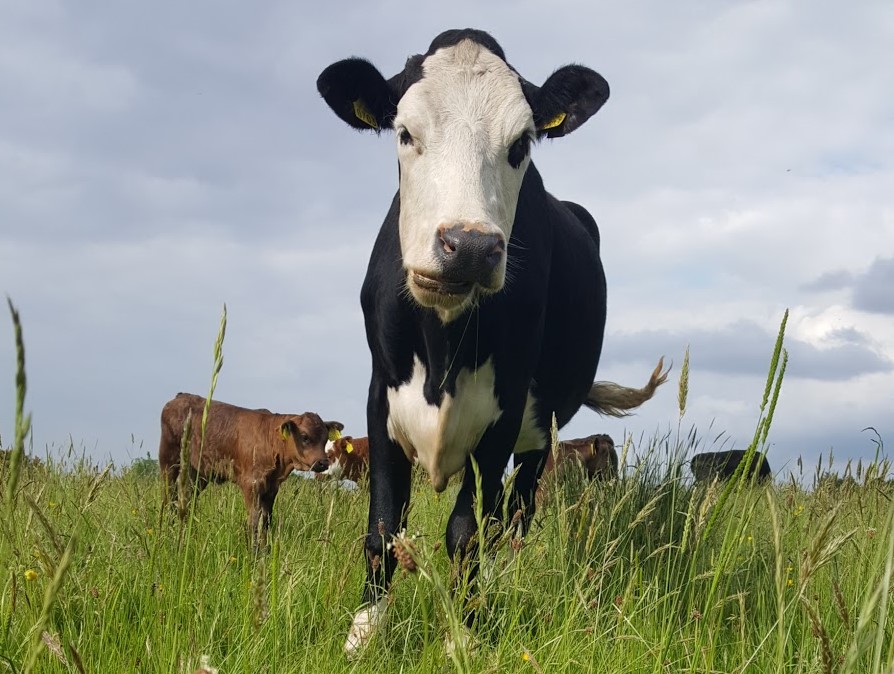
How can it be that a farmer is deemed successful when he or she can hold down a full-time off farm job and still manage the farm? Shouldn’t farming pay?
Shouldn’t farming offer a sustainable livelihood? How as eaters, can we expect healthy, humanely raised, nutritionally rich food from farmers when they spend most of their day having to work another job to cover the cost of producing food?
Thankfully, there are some farmers who have removed themselves from the industrial food system, who work the land all day, every day to provide the food and need and want. I have invested a lot of time in the passed few years to make these and other agroecological farmers more visible. For example, at my other project, foodture, we are trying to map such farmers across Ireland. I’m hoping that it pushes people to purchase their food and so support the kind of world they want to live in.
Invest in them so that they can invest the time in their job. Or as in our case: our stock.
More from Sinéad…



